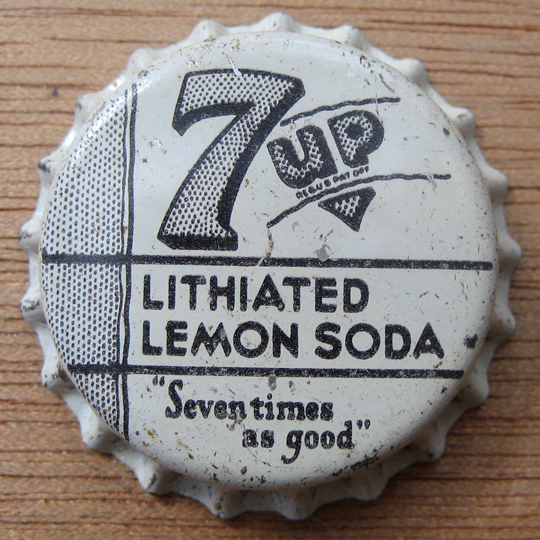
We take lithium whether we want to or not. Even if we aren’t prescribed lithium medication to treat a mental illness, don’t eat batteries, or somehow avoid listening to Nirvana, lithium is entering our bodies through environmental exposures in our food and water. What is lithium and what can it do to us?
Lithium is the simplest and lightest solid element – an alkali metal, atomic number 3 on the periodic table. In its pure form lithium is flammable and reactive, combusting upon contact with water. So while lithium is ubiquitous in Earth’s water and soil, it’s never alone, seeking stability by pairing up with positive ions to form salts. With at least a little bit of lithium basically everywhere, it naturally bioaccumulates in all living things as a trace element.

Back in 1948, psychiatrist John Cade noticed that lithium-injected guinea pigs seemed extra chilled out. Intrigued, he tested it on himself, arriving at a suitable dose to test on patients suffering from mania. Lithium worked wonders; repeatedly institutionalized patients could resume functioning within their communities. Psychiatry slept on the result for decades, spooked by cases of potentially fatal lithium toxicity if taken at excessive doses. Finally, in 1970, convincing results from rigorous clinical trials proved lithium held huge promise for people with bipolar disorder, a condition marked by destabilizing swings between manic and depressive episodes. As research progressed, optimized dosing and blood level monitoring spared patients from tremors and nausea caused by lithium poisoning.
Now, millions of people enjoy relief from bipolar disorder symptoms by maintaining lithium treatment. But even after half a century of use, exactly how lithium works its magic is unknown. Its tiny size and reactive nature make disentangling its myriad biological effects an ongoing challenge for psychiatric research. One possibility is that lithium stimulates adult neural progenitor cells to generate new neurons in the hippocampus, a brain area implicated in psychiatric illnesses that regulates memory, stress, and emotion. This hasn’t yet been shown in humans (it’s hard to get inside access to adult brains after all), but lithium does amplify growth of new hippocampal neurons in rodents. Promisingly, imaging studies suggest that the human hippocampal shrinkage typical in some cases of depression or bipolar disorder can be reversed by lithium treatment. A multitude of effects, including but not limited to stimulation of adult brain cell growth, may combine to produce lithium’s therapeutic benefit.
Whatever it’s doing, it’s working. Lithium is working well enough, in fact, that its effects can be observed at the societal and not just individual level. Researchers have compared dementia, incarceration, and suicide rates across areas with varying levels of lithium measured in groundwater. After controlling for other factors, areas with increased lithium exposure experienced less dementia, fewer violent crimes, and fewer suicides. These observations may seem too good to be true, but nevertheless replicate across numerous studies.
As confidence and enthusiasm for designer psychiatric drugs wax and wane, the mysteriously simple and relatively cheap lithium remains the frontline treatment for bipolar disorder. It should be noted that lithium doesn’t work for all bipolar people. The quest to understand how each individual’s unique genetics affect clinical responses to lithium is just beginning. In the meantime, if you’re feeling a little aggressive, down, or unstable, consider moving toward an aquifer fed by the Rio Grande, where you’ll enjoy some of the highest levels of lithium in the United States.
Featured Image: 7up soda included lithium citrate until 1948 when the ingredient was banned by the FDA / Source: maura
Editor: Aditi Kothari